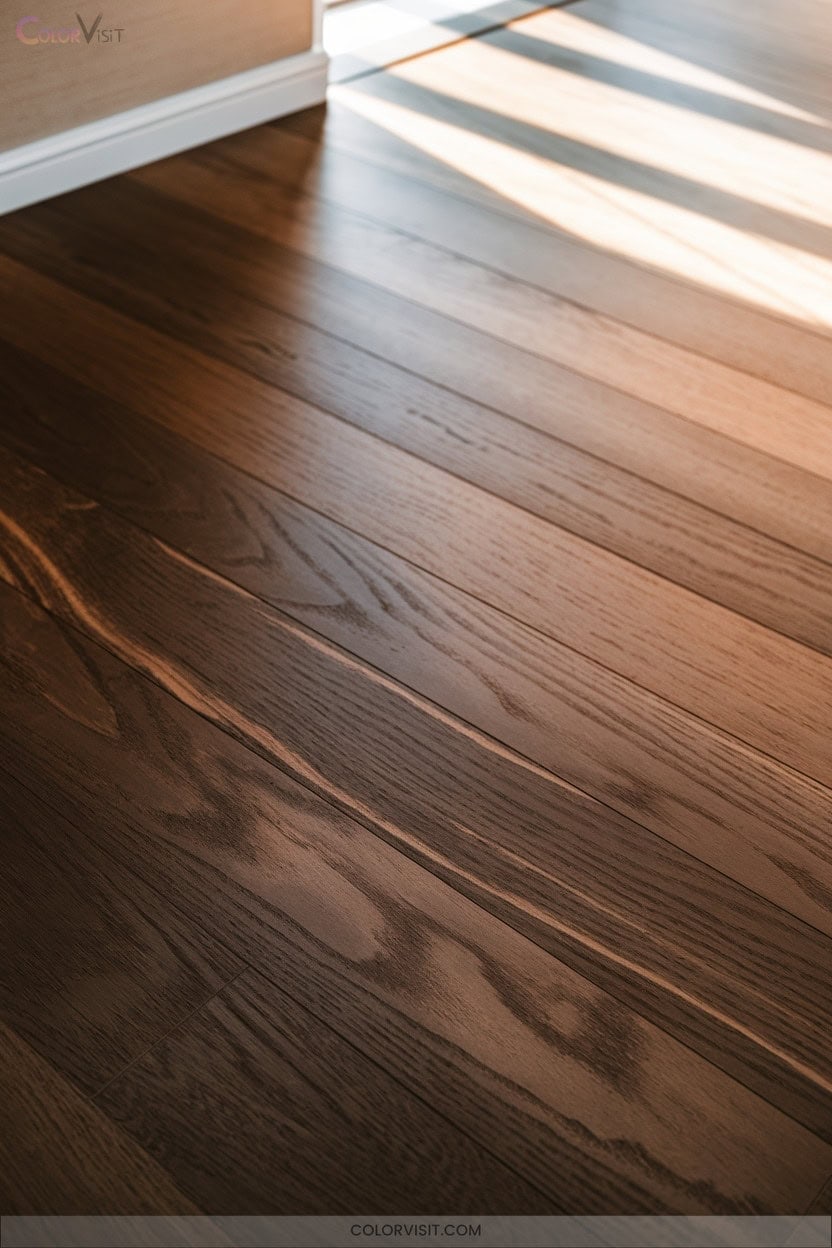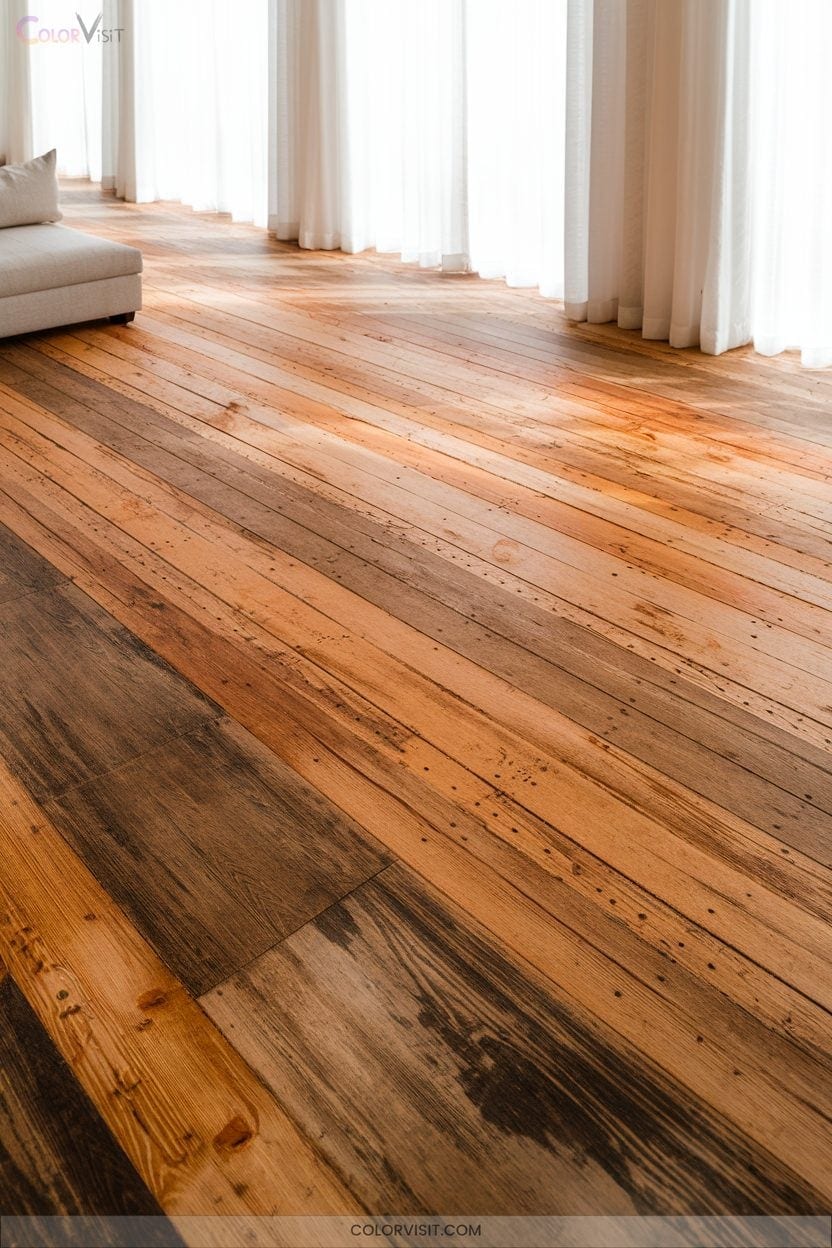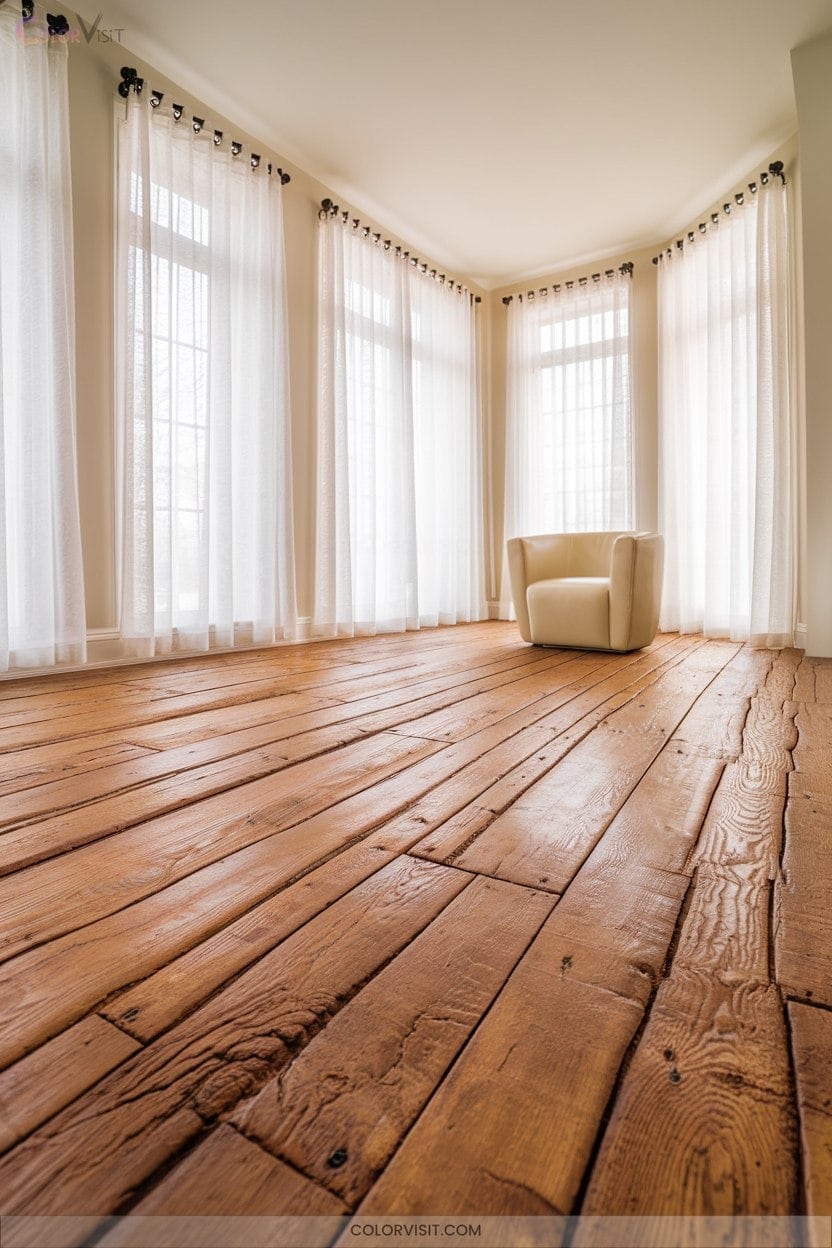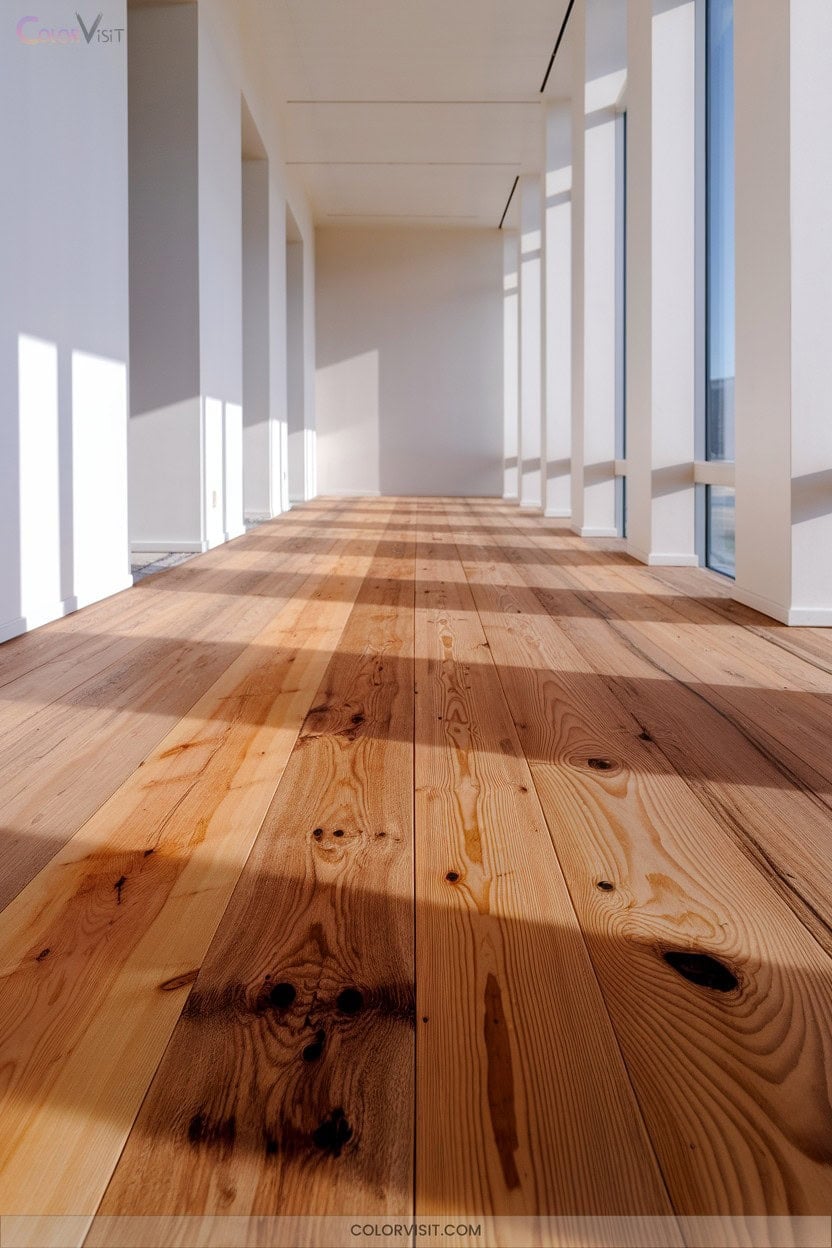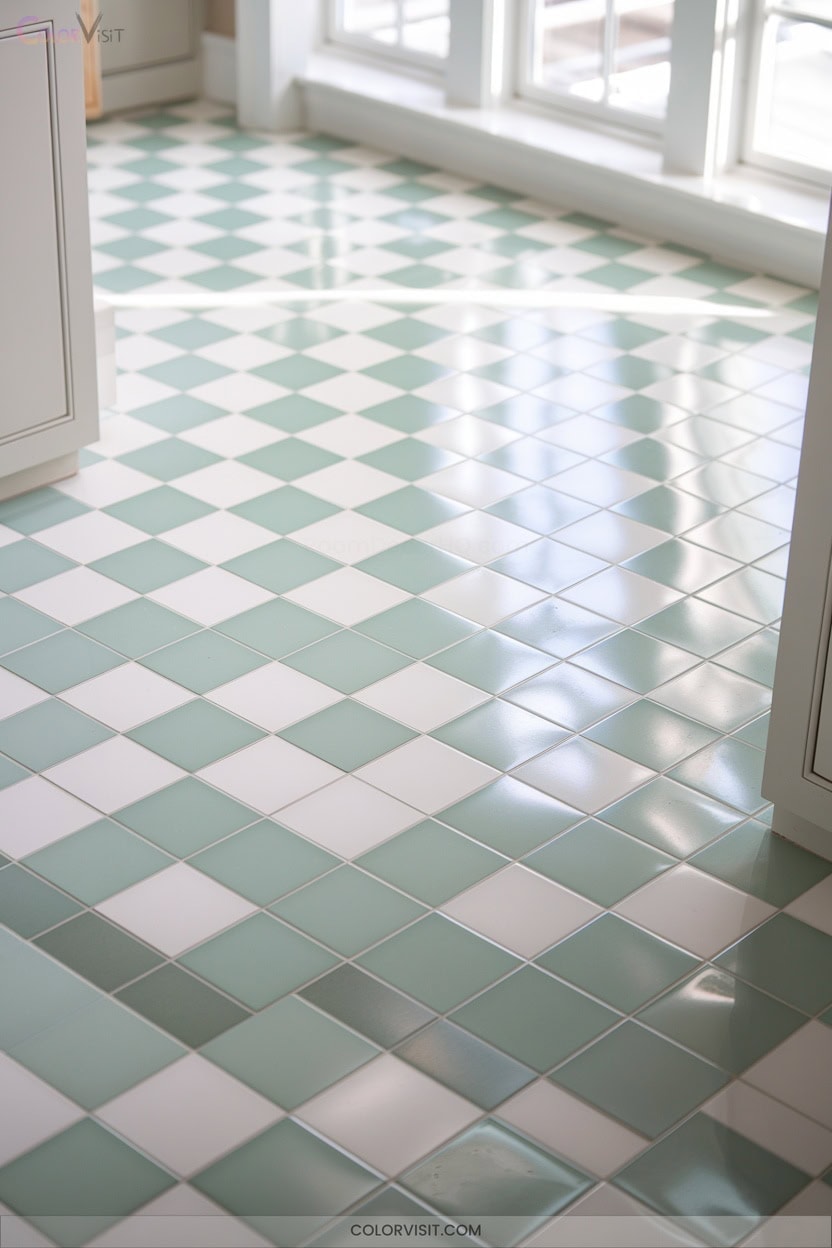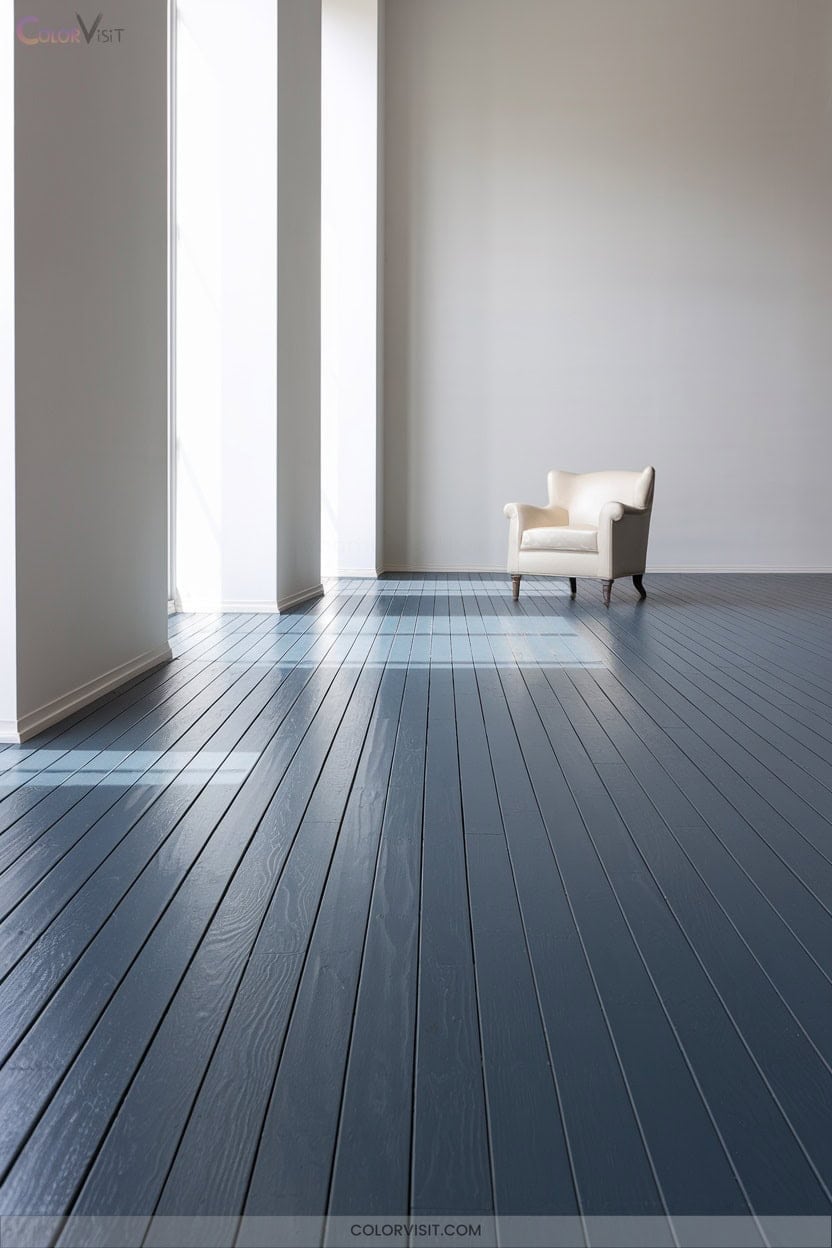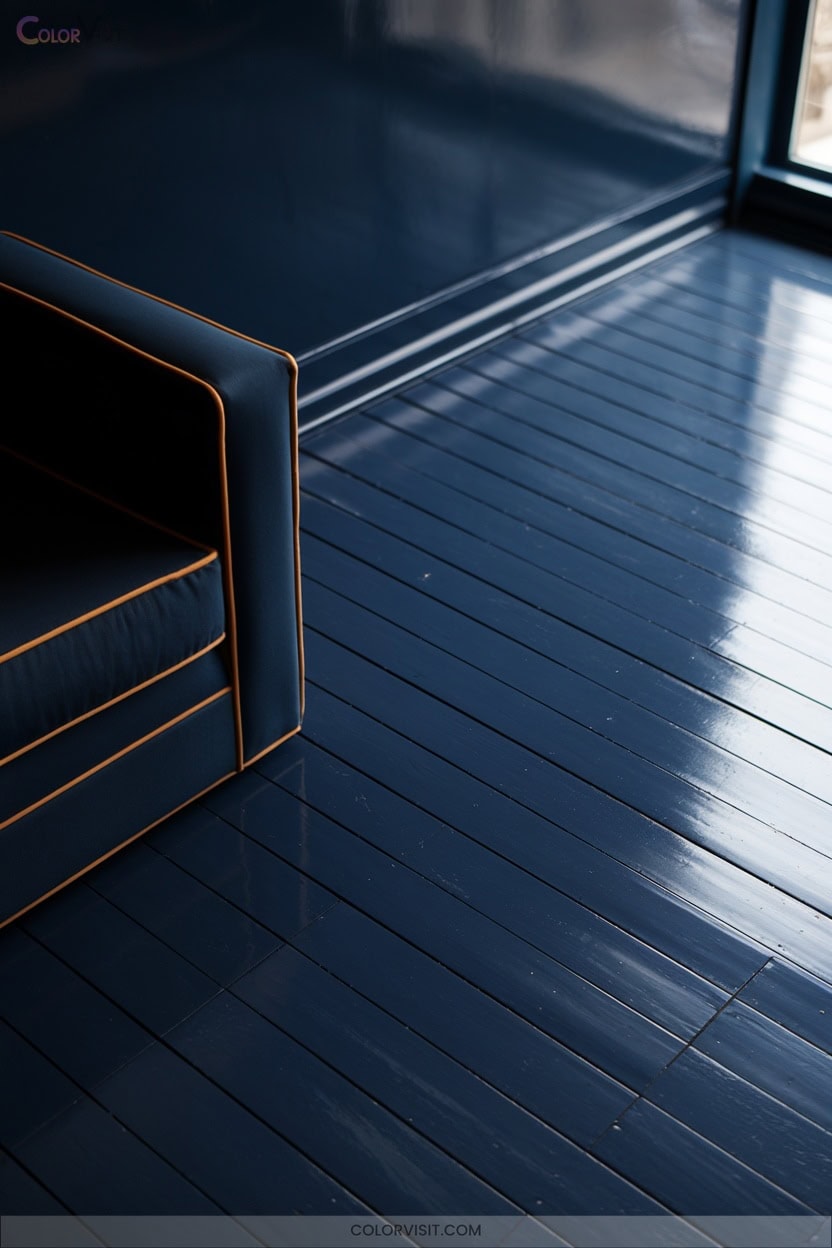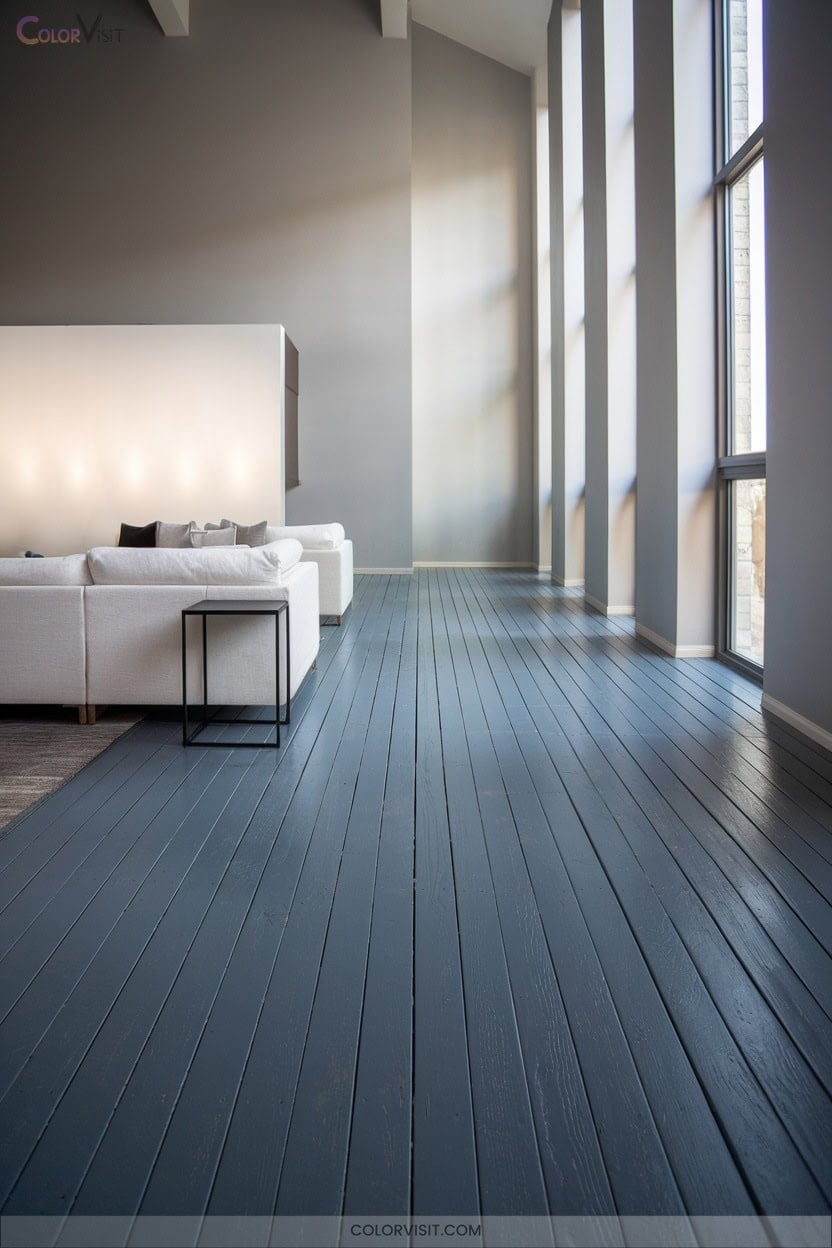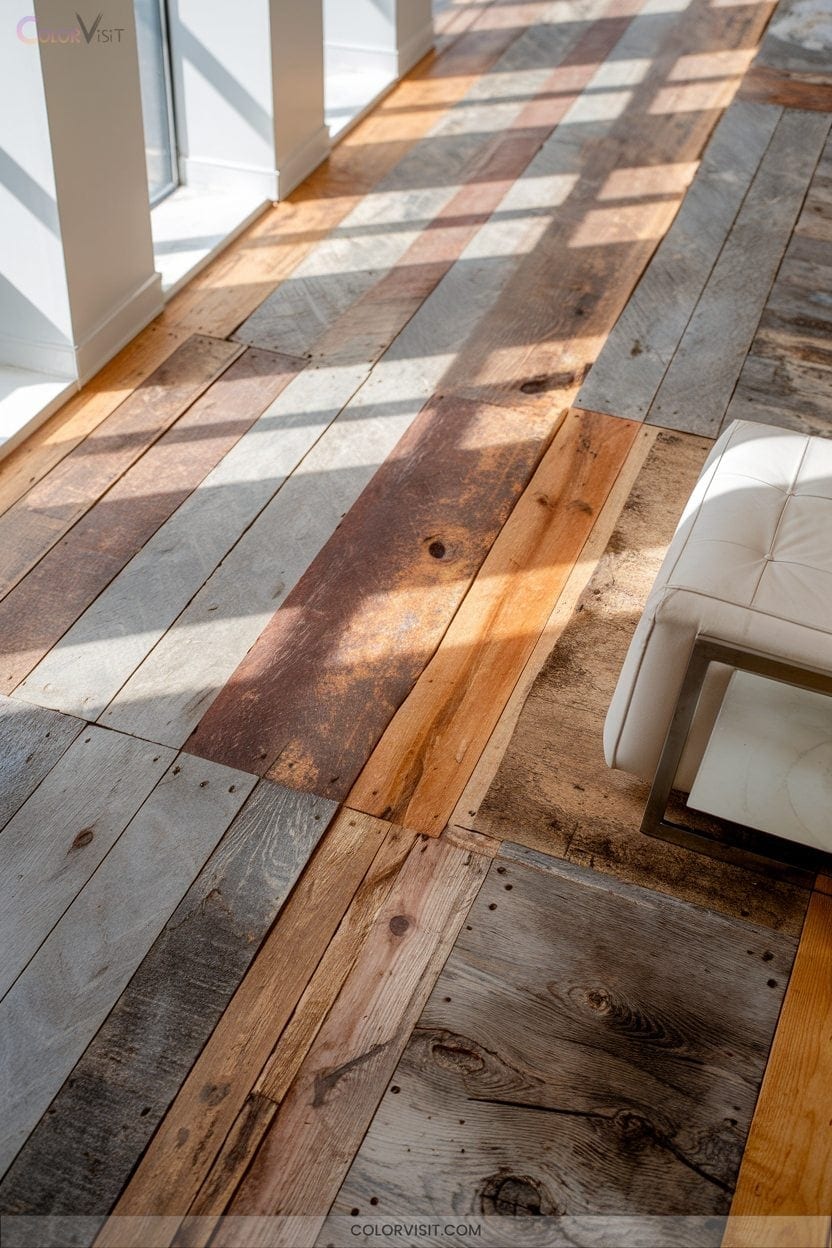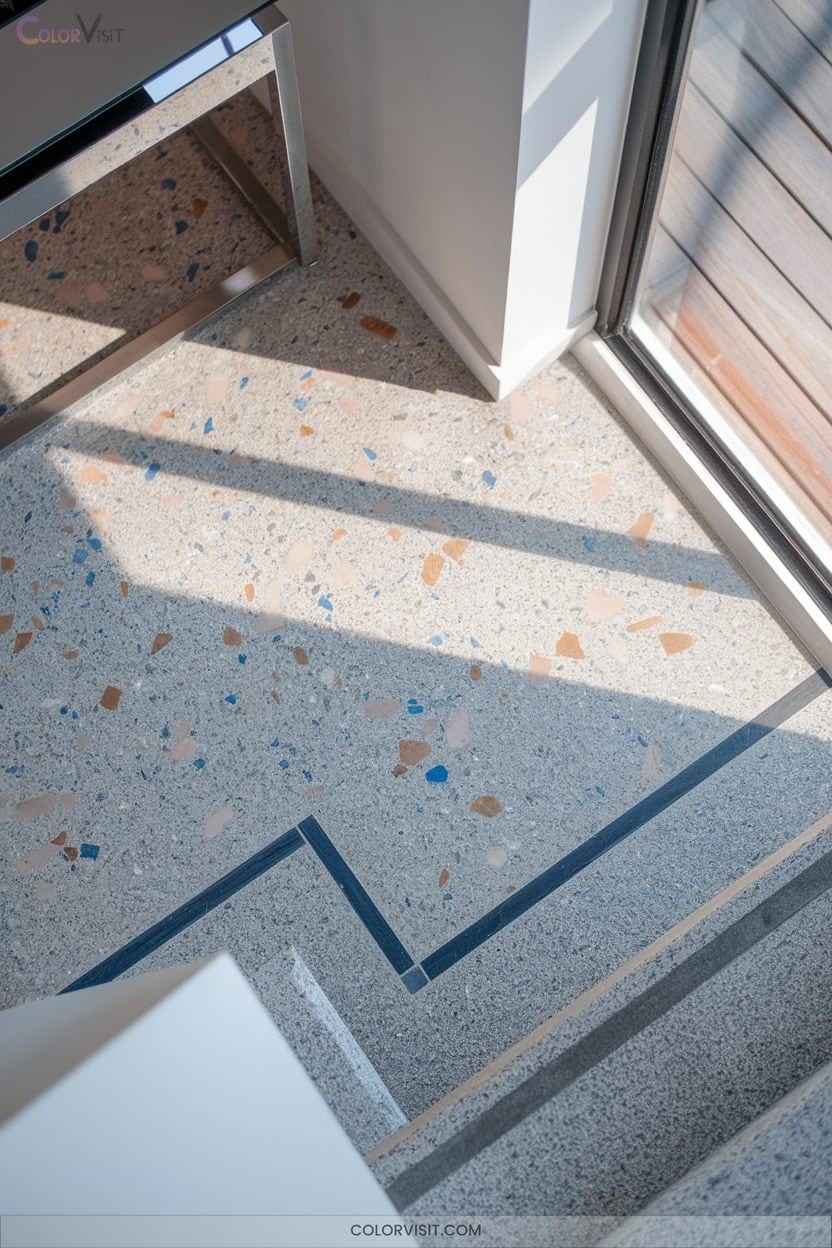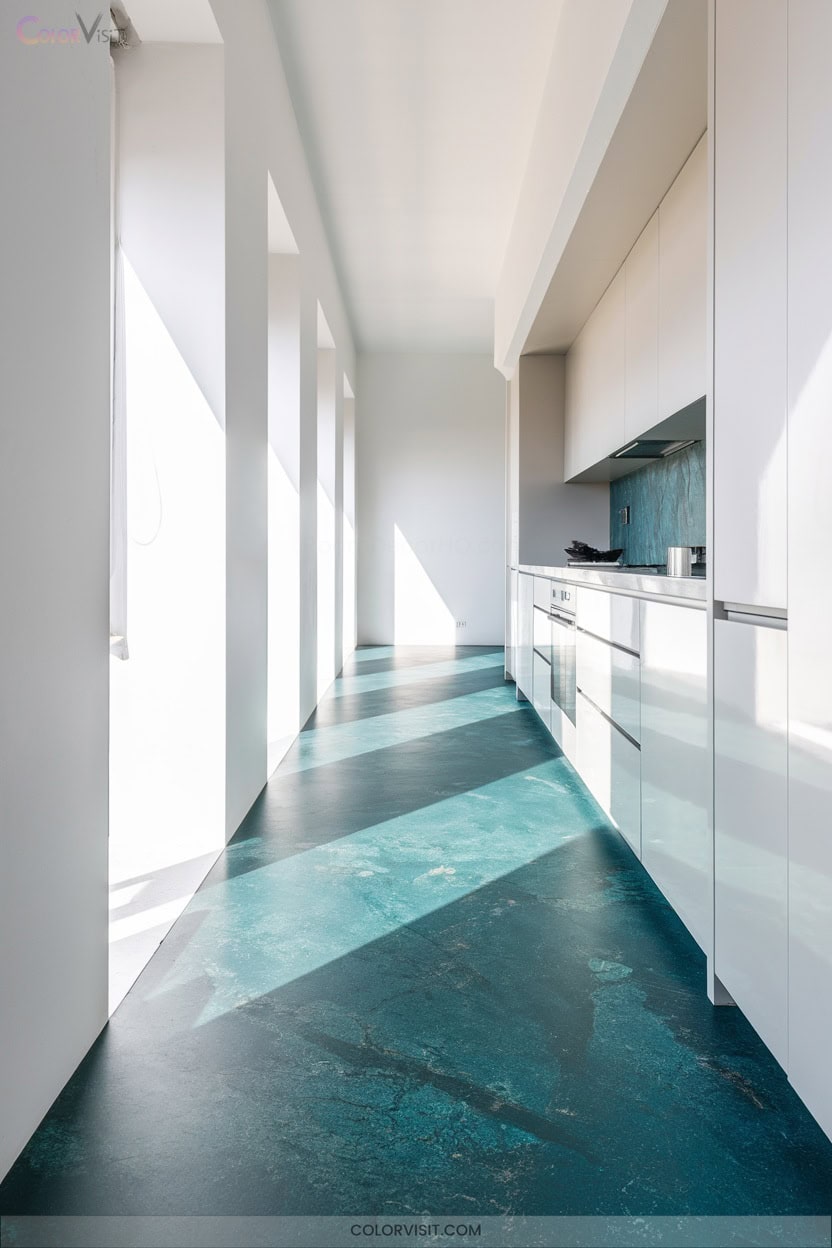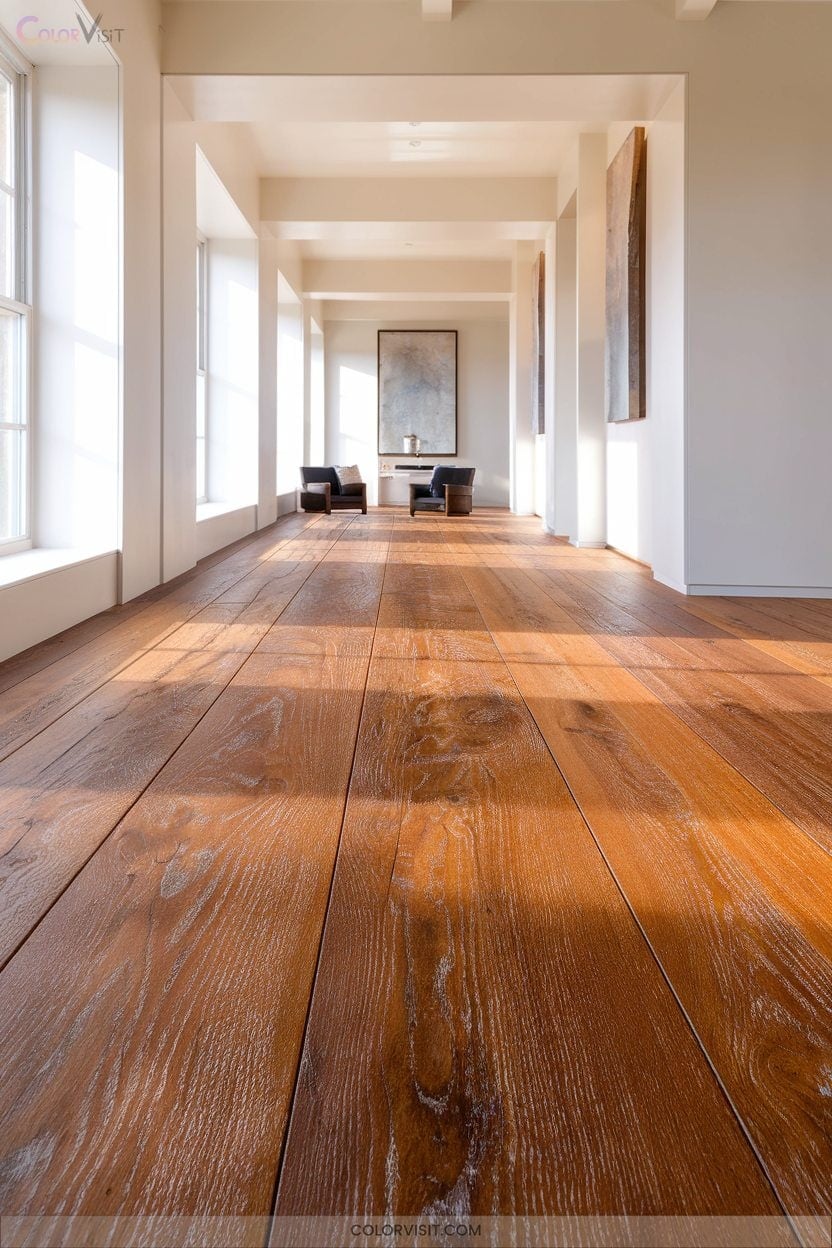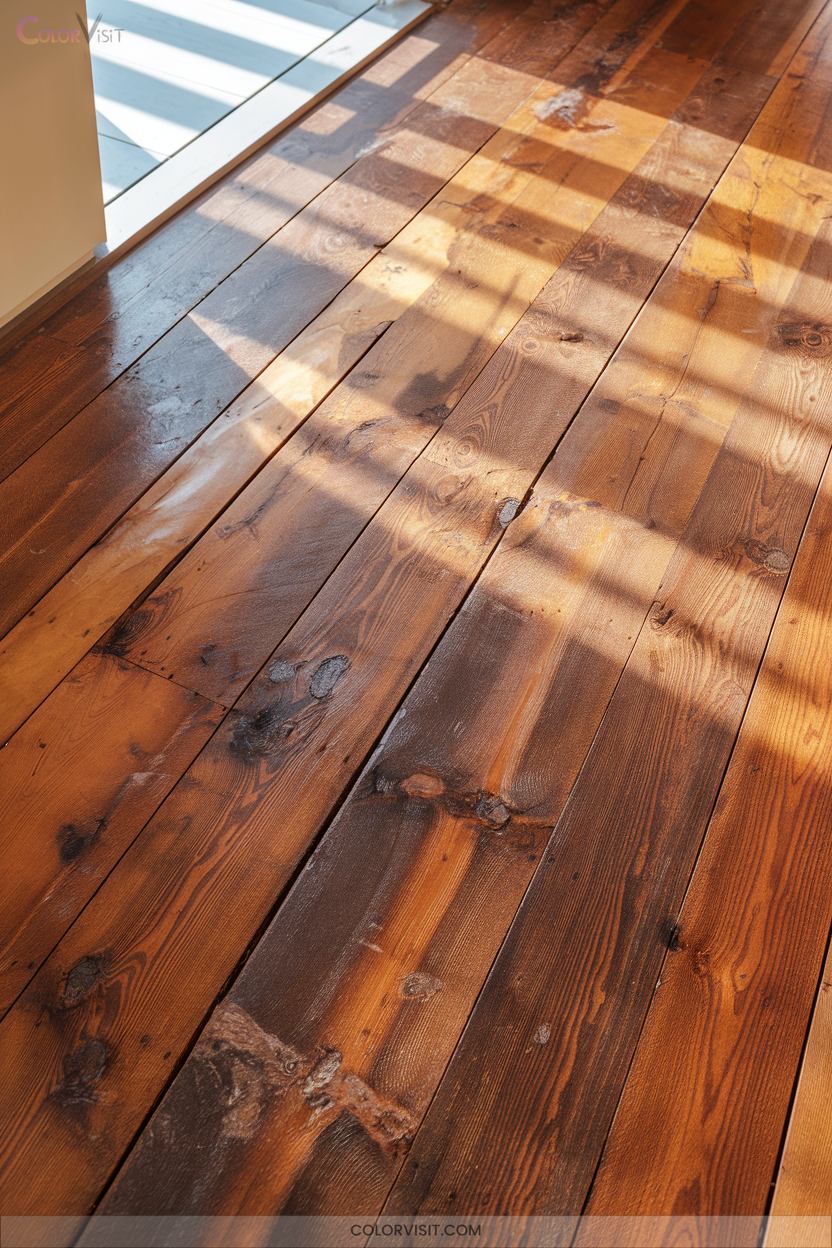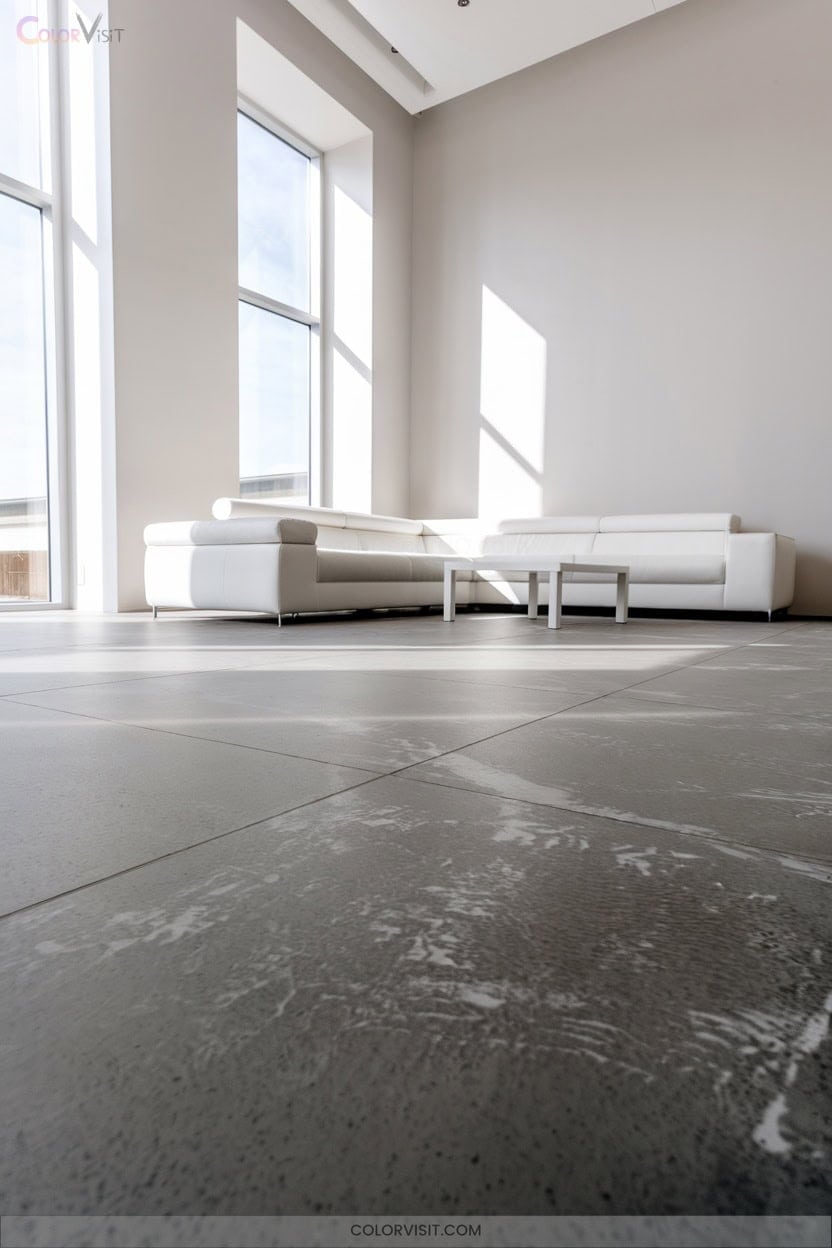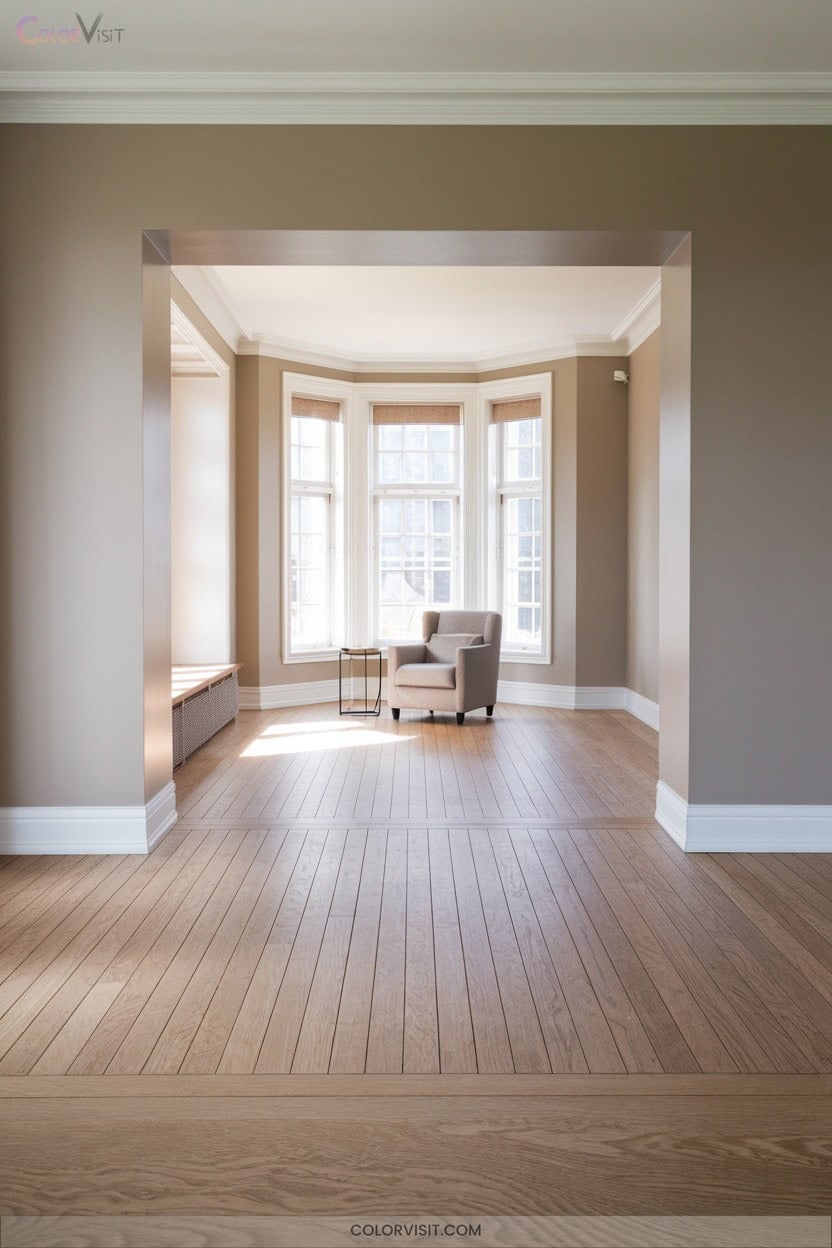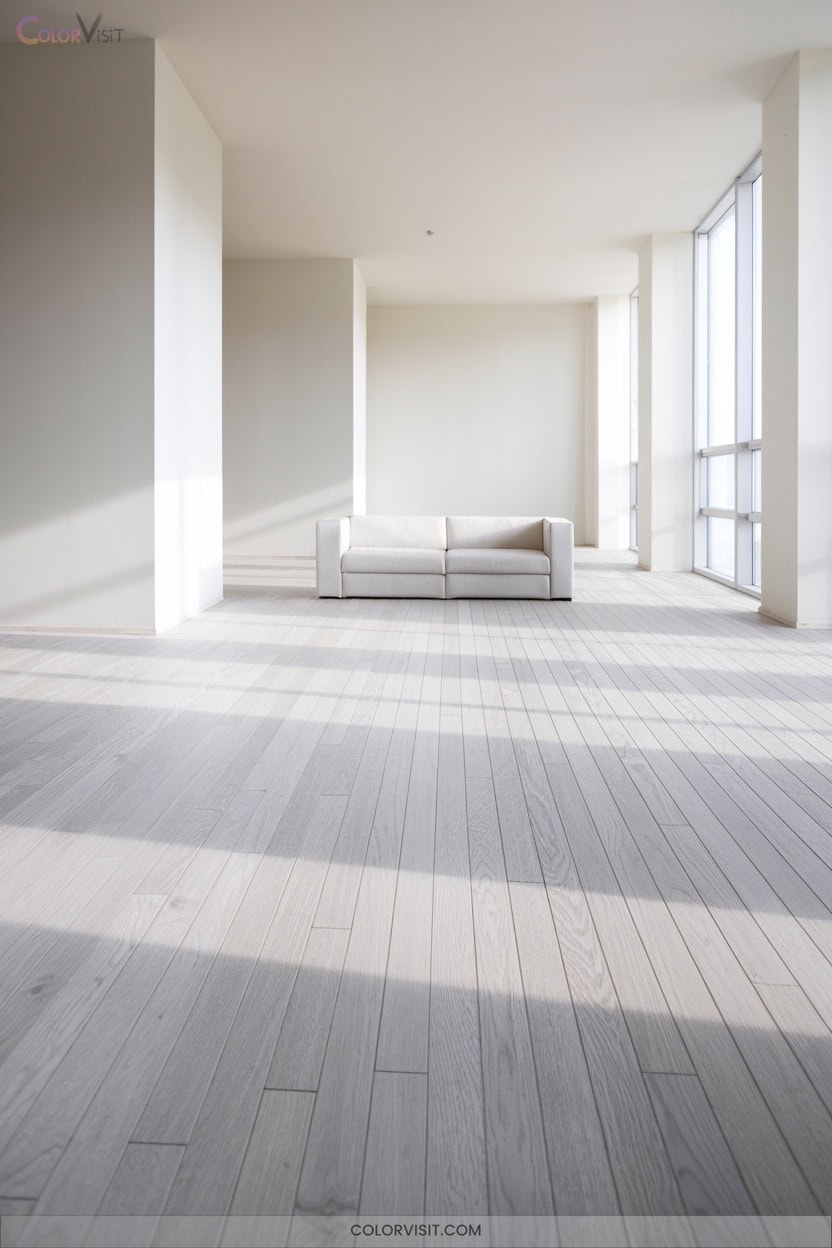18 Durable Floor Color Ideas to Ground Your Home Design
Anchor your interiors with rich dark brown hardwoods for timeless elegance, or opt for reclaimed wood in sun-washed blond or nutty brown for artisanal warmth and sustainability.
Hand-scraped and wire-brushed textures mask wear while adding tactile dimension, while wide plank engineered floors expand space and resist moisture.
If you want designer edge, try dramatic deep green, checkerboard mint, terrazzo, or eco-friendly linoleum in earthy taupe. Explore further to discover all 18 colorways tailored for durability and standout style.
1. Dark Brown Hardwood Floors
Dark brown hardwood floors instantly infuse any space with a sense of refined elegance and enduring style. You’ll notice how the deep, saturated hues create visual depth, serving as a dramatic counterpoint to light walls and modern furnishings.
These floors elevate your interiors, blending seamlessly with both classic and contemporary palettes. Thanks to their dense grain and resilient finish, they withstand high-traffic zones, resist fading, and cleverly conceal minor scratches.
Their design versatility means you can anchor minimalist, maximalist, or blended schemes effortlessly. Embrace this timeless trend—dark brown hardwoods offer innovation through durability, effortless maintenance, and lasting, on-trend sophistication.
2. Warm Reclaimed Wood Tones
While dark brown hardwoods offer sleek sophistication, warm reclaimed wood tones bring a sense of history and artisanal craftsmanship to your floors.
You’ll notice the organic beauty in every salvaged plank—nail holes, weathered grain, and subtle color gradations tell authentic stories.
With options like reclaimed oak, chestnut, and heart pine, you harness a palette ranging from sun-washed blondes to rich, nutty browns.
Each board is inherently unique, seamlessly blending modern aesthetics with sustainable innovation.
Customizable stains and moisture-resistant underlayments further guarantee longevity.
Choose reclaimed wood for a floor that’s environmentally conscious, structurally resilient, and deeply resonant with character.
3. Hand-Scraped Rustic Finishes
How do you achieve that coveted blend of timeworn elegance and lasting utility underfoot?
Hand-scraped rustic finishes are the answer, fusing artisanal surface texture with next-level durability.
Their pre-worn grooves and distressed surfaces mask daily wear, making them perfect for high-traffic zones. Light dances across their 3D relief, enhancing wood grain and color dynamics.
For modern innovators, these floors bridge farmhouse warmth and contemporary edge.
Consider these factors:
- Oak, hickory, or maple amplify depth and stain versatility.
- Gray washes or medium-browns modernize rustic charm.
- Pre-finished planks best preserve hand-scraped detail.
- Board length variation elevates authenticity.
4. Wide Plank Natural Hardwood
After exploring the tactile allure of hand-scraped finishes, consider the architectural drama wide plank natural hardwood brings to your floorscape.
Fewer seams visually expand your space, lending grandeur—especially in open-concept or high-ceilinged rooms.
Wide planks create a sense of spaciousness, infusing rooms with effortless grandeur and an inviting, open feel.
You’ll notice pronounced grain patterns, knots, and markings that celebrate each wood species’ unique character, from French Oak to Southern Pecan.
Matte or low-gloss finishes enhance the wood’s authenticity and tactile richness, blending seamlessly with both classical and forward-thinking décor.
This flooring isn’t just aesthetically innovative; fewer joints mean easier maintenance and a cleaner look, making wide plank hardwood a top trend in 2025 for design-driven homes.
5. Engineered Hardwood in Neutral Shades
Engineered hardwood in neutral shades delivers a sophisticated balance of form and function, making it a go-to choice for contemporary and classic interiors alike.
These floors stand out for their technical innovation and enduring appeal, offering a minimalist backdrop that adapts to evolving design trends.
You’ll appreciate their advanced construction and lasting beauty:
- Multi-layered core resists warping and moisture, perfect for challenging spaces.
- Factory-applied finishes enhance Janka-rated durability and minimize maintenance.
- Neutral tones like taupe, beige, and light oak complement any palette and diffuse natural light.
- Dimensional stability guarantees seamless installation—even with radiant heating systems.
6. Green Accented Painted Floors
Why not consider green accented painted floors when you want a bold yet versatile foundation that instantly elevates your space?
Deep green hues like Behr’s Cypress Vine hide wear in high-traffic zones, while a polyurethane topcoat guarantees long-term durability.
With proper cleaning, priming, and DIY application, you can achieve this designer-forward look for under $400.
Strategically coordinate green accents in hardware and décor for visual cohesion and experiment with mid-century furniture to balance retro and modern aesthetics.
Whether anchoring eclectic antiques or minimalist lines, green floors redefine tradition and let you experiment with innovative palettes far beyond conventional flooring choices.
7. Minty Green and White Checkerboard
If green-accented painted floors spark your interest, minty green and white checkerboard patterns offer a fresh, on-trend alternative that’s both playful and polished.
This look thrives in modern and vintage-inspired spaces, leveraging modular tile systems or handpainted ceramics for artisanal character.
Optimize pattern visibility by scaling with 12″ or 24″ tiles, and accentuate edges with cove base trim.
Embrace this trend for statement entryways or bold bathrooms, where geometric precision meets aesthetic innovation.
- Install Verde marble or porcelain for durability and elegance.
- Opt for grid or diamond layouts for distinct visual impact.
- Coordinate grout and color contrast for optical clarity.
- Use bundle systems for cost-effective material sourcing.
8. Deep Blue-Gray Floor Hues
A deep blue-gray floor instantly grounds a space with sophisticated depth, balancing cool blue undertones and muted gray for a look that’s both timeless and contemporary.
You’ll find this versatile hue—from Farrow & Ball Selvedge to Sherwin-Williams Granite Peak—creates a calm yet dramatic base in kitchens, living rooms, or entryways.
Pair it with brass fixtures, natural wood, or leather for warmth, or layer with white or muted green walls for elevated contrast.
Blue-gray’s matte or subtly textured finishes disguise scuffs and wear, making it ideal for high-traffic zones.
Embrace tonal layering for a serene, design-forward foundation that endures.
9. Color Drenched Floor and Wall Combinations
Immersion defines today’s most striking interiors, and color-drenched floor and wall combinations deliver that enveloping effect with architectural intent.
You’ll find seamless continuity and bold atmosphere by saturating both surfaces in a unified palette, pushing boundaries in both minimalist and expressive spaces.
Elevate your design narrative with these cutting-edge strategies:
- Match sage green floors and walls for organic tranquility in sunlit rooms.
- Opt for monochrome mushroom tones floor-to-ceiling to subtly expand small spaces.
- Use high-gloss white on floors and walls to maximize light diffusion.
- Mirror herringbone wood floor stains to wall paneling for geometric cohesion.
10. Moody Lead Gray Painted Floors
Moody Lead Gray painted floors instantly anchor interiors with a deep, sophisticated palette that’s both on-trend and timeless.
This Benjamin Moore blue-grey—almost black, with subtle green undertones and a low LRV—creates dramatic depth in any space.
Pair it with crisp whites like Chantilly Lace for contrast, or layer with natural wood tones for tactile interest.
Proper floor prep—sanding, priming, and using durable paint—ensures longevity, while a matte or distressed finish amplifies its moody effect.
Lead Gray’s versatility shines in minimalist, modern, or rustic rooms, providing a striking backdrop that elevates furnishings and art, and enhances the overall architectural narrative.
11. Sustainable Reclaimed Wood Floors
Reclaimed wood floors offer a compelling blend of eco-conscious design and enduring performance, making them a standout choice for sustainable interiors.
You’ll appreciate their unique patinas, matured grain, and storied imperfections that bring authenticity to any space.
Opting for reclaimed wood supports circular resource use while providing superior durability due to its dense, seasoned composition.
If you seek to innovate your home with a low-carbon footprint and timeless character, consider these advantages:
- Reduces deforestation and landfill waste.
- Enhances structural integrity and dimensional stability.
- Delivers one-of-a-kind aesthetics and color complexity.
- Qualifies for sustainable building certifications.
12. Terrazzo Composite Flooring
While reclaimed wood floors celebrate nature’s organic textures, terrazzo composite flooring stands out for its modern versatility and bold artistic expression.
Terrazzo composite flooring redefines interiors with contemporary flair, offering limitless creative possibilities and artistic individuality beyond traditional natural materials.
You’ll harness the power of an epoxy or resin binder matrix, embedding marble, glass, or shells as bespoke aggregates.
Divider strips let you define intricate patterns or vibrant graphics, customizing colors to suit your vision.
The seamless, grout-free surface offers polished sophistication, elevating high-traffic zones with unmatched durability and anti-microbial benefits.
Effortless maintenance, robust compression strength, and adaptability to future design shifts make terrazzo an innovative choice for those who value both performance and striking, personalized aesthetics.
13. Eco-Friendly Linoleum Options
Sustainability meets sophisticated design with eco-friendly linoleum flooring, where natural materials like linseed oil, limestone, and wood flour deliver both durability and style.
You’ll appreciate Marmoleum’s CO2-neutral production and Tarkett’s 100% recyclable, Cradle to Cradle-certified options.
This resilient flooring boasts anti-microbial and non-toxic properties, making it a technical favorite for modern, healthy interiors.
You can ground your home’s look with bold, trend-forward color choices and impressive structure variety.
- Over 300 colorways and 9 structures—unmatched customization
- 98% natural, 78% bio-based composition
- Bactericidal Linoxyn binder for hygiene
- Fully recyclable, zero-PVC for sustainable innovation
14. Hand-Scraped and Wire-Brushed Natural Textures
As you explore durable floor color ideas, the tactile allure of hand-scraped and wire-brushed natural textures offers a compelling alternative to sleek surfaces and eco-forward linoleum.
Hand-scraped and wire-brushed textures bring inviting character to durable floors, elevating any space beyond the ordinary.
Hand-scraped floors feature artisanal grooves and subtle imperfections, channeling old-world charm and masking everyday wear—ideal for high-traffic innovation-driven spaces.
Wire-brushed surfaces, with their pronounced grain and linear uniformity, achieve a modern rustic aesthetic while exposing resilient wood fibers for enhanced durability.
Both textures amplify visual depth and tactile dimension, available in solid hardwood, engineered wood, and luxury vinyl.
You’ll discover these finishes ground your design with authenticity, trend-forward character, and lasting performance.
15. Vintage-Inspired Flooring Materials
A revival of vintage-inspired flooring materials brings enduring character and curated nostalgia to modern interiors. You can harness the energy of retro design while maintaining durability and innovative style.
Modern manufacturing lets you play with pattern, color, and material to achieve a unique, trend-forward look.
Consider these options:
- Vinyl with Iconic Patterns — Checkerboard, hexagon, or Victorian motifs that are scuff-resistant and versatile.
- Retro Ceramic or Porcelain Tiles — Authentic vintage aesthetics, waterproof, pet-friendly, and endlessly customizable.
- Classic Wood Flooring — Light or honey tones evoke mid-century modern and open up space.
- Unique Materials — Cork, encaustic, or Moroccan tiles for texture and sustainable innovation.
16. Timeless Gray and White Neutrals
Timeless gray and white neutrals anchor interiors with versatility, offering a refined palette that adapts effortlessly to evolving trends.
You’ll achieve a sophisticated balance by aligning gray flooring undertones—violet, blue, or green—with the right shade of white paint.
Pair cool-toned grays with crisp whites like Sherwin Williams Pure White SW 7005, while warmer gray floors harmonize with soft whites such as Benjamin Moore Decorator’s White CC-20.
Cool gray floors shine with crisp whites like SW Pure White, while warm grays blend seamlessly with soft whites such as BM Decorator’s White.
For cohesive flow, opt for neutral whites (e.g., Chantilly Lace OC-65) and introduce texture through finishes or architectural elements.
Matte LVP or porcelain tile guarantees durability, supporting your innovative, future-forward design vision.
17. Classic Taupe and Beige Floors
Moving beyond the crisp sophistication of gray and white, taupe and beige floors introduce a rich, grounded warmth that anchors any space with effortless elegance.
Embrace these neutrals for their ability to balance tradition with modernity, offering technical versatility and contemporary allure.
Their nuanced undertones and durable finishes make them ideal for design-forward homes seeking both function and flair.
- Taupe’s dark grey-beige pigment delivers visual depth and pairs seamlessly with lighter wall tones.
- Beige flooring maximizes light reflection, visually expanding compact interiors.
- Luxury vinyl options guarantee scratch resistance and low maintenance.
- These hues headline 2024’s sustainable, style-versatile flooring trends.
18. Light Gray Hardwood for Contemporary Spaces
Light gray hardwood flooring defines contemporary interiors with its calm sophistication and subtle versatility.
You’ll appreciate its ability to create a serene, visually expansive atmosphere while acting as a neutral canvas for both minimalist and statement design choices.
Light gray hardwood flooring effortlessly expands your space and provides a tranquil foundation for any design, from understated to bold.
Pair it with wide planks to maximize spaciousness, or opt for handmade finishes to introduce unique character.
Technically resilient, light gray hardwood resists scratches, moisture, and everyday wear, making it highly functional for modern living.
Its chameleon-like adaptability complements marble, steel, or glass, and harmonizes with various color palettes.
In trend-forward homes, this flooring anchors innovative spaces without overwhelming your aesthetic vision.
Frequently Asked Questions
How Do I Maintain and Clean Different Types of Durable Flooring?
You’ll optimize longevity and aesthetics by routinely vacuuming or sweeping, using pH-balanced cleaners for each surface, and drying with microfiber mops. Prioritize spot treatments, moisture control, and regular inspections to keep your floors looking cutting-edge and pristine.
Are Heated Floors Compatible With All Durable Flooring Materials?
You can’t pair every durable flooring with radiant heating—ceramic, porcelain, and stone excel thermally, but solid hardwood and thick carpets underperform. Always verify manufacturer specs and embrace innovative materials like engineered wood or luxury vinyl for efficient heat transfer.
What Flooring Options Are Best for Homes With Pets?
You crave both chic style and serious resilience—juxtapose luxury vinyl tile’s cutting-edge visuals with ceramic tile’s timeless durability. Opt for water-resistant, scratch-proof surfaces, and layer plush area rugs for comfort, ensuring your space outpaces pet-friendly flooring trends.
Can Durable Floors Improve Indoor Air Quality?
You’ll elevate your space’s air quality by choosing durable floors—opt for low-VOC hardwood, bamboo, or cork. These surfaces resist allergen buildup, simplify cleaning, and align with eco-forward design trends, ensuring your home feels both fresh and innovative.
How Does Flooring Impact Home Resale Value?
You’ll boost resale value dramatically—homes with hardwood floors sell 90% faster and at higher prices. Prioritize engineered wood or premium laminates for a seamless, modern aesthetic. Consistent, high-quality surfaces create aspirational, trend-forward spaces that captivate buyers instantly.
Conclusion
With floors covering up to 40% of your home’s visual space, your choice of color truly anchors the overall aesthetic. Whether you lean into reclaimed wood’s patina, opt for trend-forward taupe, or embrace engineered hardwood’s resilience, each hue impacts your design narrative.
Don’t underestimate the technical interplay between plank width, finish, and undertone—these subtleties elevate your space from ordinary to extraordinary. Select a palette that grounds your style and stands the test of time.


